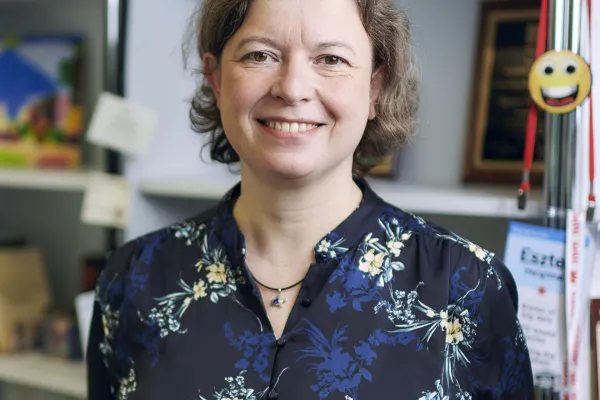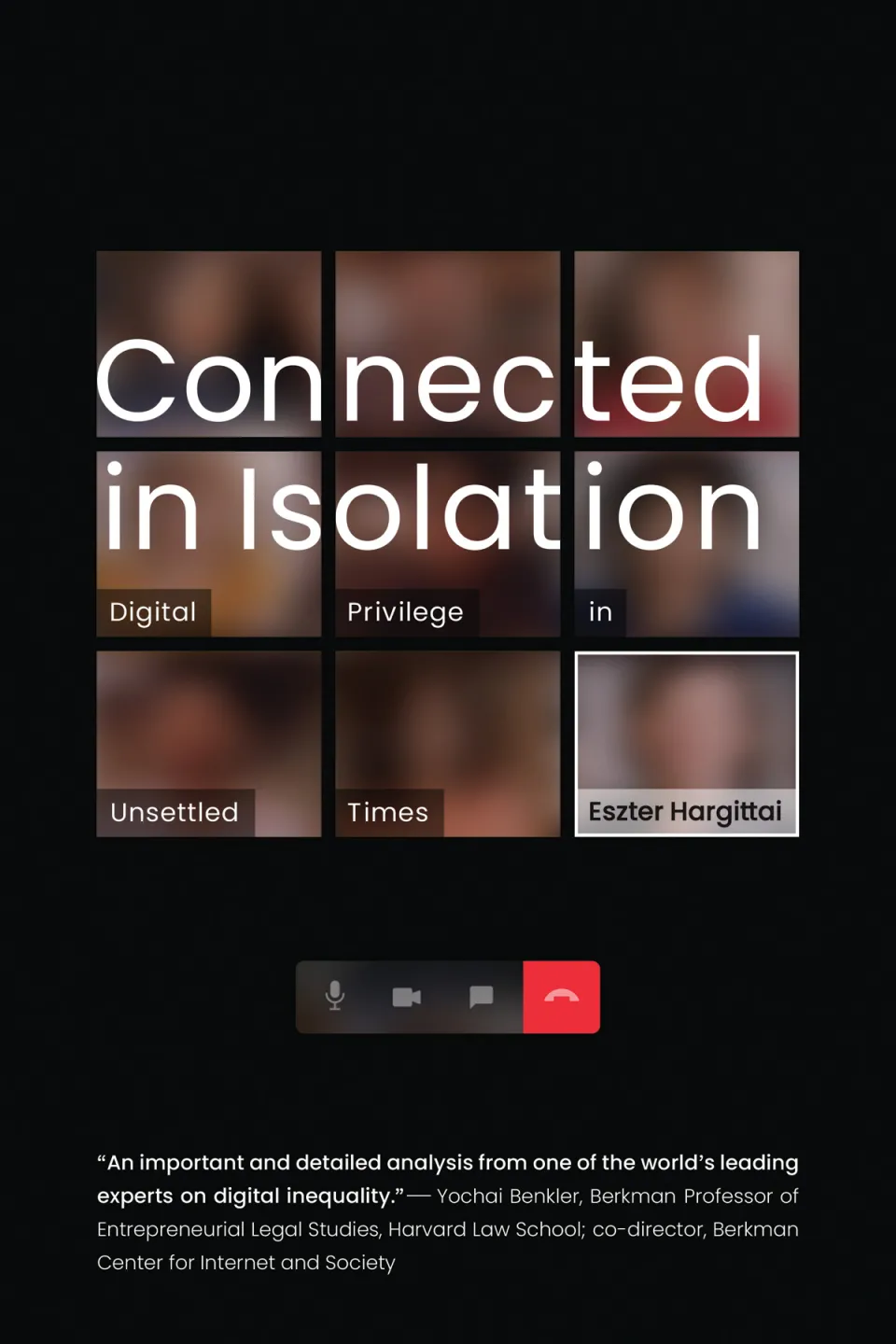Behind the Screens
Research & Inquiry
Neilson Professor’s new book demystifies digital inequality
When not in residence at Smith, Hargittai is a professor at the University of Zurich.
Photograph courtesy of MIT press
Published September 26, 2023
A few years ago, in the early days of international COVID-19 lockdowns, scholar Eszter Hargittai ’96 collected survey data in three countries to explore social and digital disparities among internet users. Her newest book, Connected in Isolation: Digital Privilege in Unsettled Times (MIT Press), documents the findings from that study. Such research interests had already established an international reputation for Hargittai, a professor and chair of internet use and society in the communication and media research department at the University of Zurich.
This fall, she has a residency on campus as Smith College’s Neilson Professor. The professorship, which commemorates Smith’s third president, William Allan Neilson, was established in 1927; past Neilson Professors include writers Alfred Kazin and Eudora Welty and poet W.H. Auden. Prior to her arrival on campus, Hargittai answered questions from her home in Zurich about her decadeslong work looking into internet use—a spark that ignited during her undergraduate years at Smith.
What does it mean to study digital privilege and the digital divide?
Ever since working on my senior thesis at Smith, I have been interested in how inequality is reflected in who gets to benefit from the internet and who is left behind. As lockdowns spread across the globe in March 2020 due to COVID-19, people quickly became increasingly reliant on digital connectivity to access essential resources and, in many cases, to continue their jobs. As someone who had been studying differences in people’s internet uses for over two decades, I found it paramount that I document what was happening in the realm of people’s digital context to see whether people in different circumstances were managing better or worse. With my research team at the University of Zurich, we fielded a survey in the early days of lockdowns in the United States, Italy, and Switzerland to be able to answer questions such as how people were interacting on social media about the pandemic, where they were getting information about the virus, and how these related to their knowledge about COVID-19.
What are some examples of digital inequality that are not typically recognized?
An important aspect of digital inequality concerns the differences in people’s skills when it comes to digital media. Skills refer to awareness of what is possible with digital technologies and the effective, efficient, and informed uses thereof. A common misconception is that all young adults are digitally savvy because they grew up with technologies, while all older adults are clueless and behind. Both assumptions are incorrect. There are considerable differences among youth in their online abilities, and it is a disservice to that generation to assume that they know everything about technology and thus not offer them support by way of in-school training or at-home conversations. When it comes to older adults, there are great variations among them as well, with some being very savvy with technologies. In that case, it is a disservice not to take advantage of such skilled older users, especially since research shows that older adults prefer to learn from their peers.
Going beyond the pandemic, how do your findings underscore the social and policy implications of digital media as a means to safely and successfully navigate the world in general?
It is not enough for people to have access to vast amounts of information; it is also important for them to know how to use the systems at their fingertips and how to evaluate the content they encounter. Importantly, those with more robust internet access—measured as having multiple types of devices—and those more skilled understood COVID-19 better, even after taking various sociodemographic factors into consideration. This shows that mere access to the internet is not enough. Quality access and better skills translate into tangible knowledge even beyond people’s education levels, age, and other background characteristics.
The book examines how digital disparities played out during the pandemic.
You were a Smith undergraduate during the technological dawn of the World Wide Web in the mid-’90s. Did you have plans then to forge your tech-savvy skills into a field of study?
I wrote my thesis in the sociology department under the guidance of Nancy Whittier, Sophia Smith Professor and professor of sociology, about the unequal international spread of the internet. I also worked as a research assistant for Joseph O’Rourke, Spencer T. and Ann W. Olin Professor Emeritus of Computer Science and professor of mathematics and statistics. This type of interdisciplinary exposure and support encouraged my research about the internet’s international diffusion, which then inspired my doctoral work at Princeton about skill differences in Americans’ internet use. I have been studying this topic ever since. I have expanded it in various ways, of course, but the core questions driving my work remain the same: Who benefits and who is left behind as digital technologies permeate more and more of our lives?
Why is the use of digital media an important skill for older adults to maintain?
As people age, their social networks contract, children may move, and friends may pass away. Yet we know that social connections are essential for well-being. Digital technologies are an excellent way for older adults to connect with faraway loved ones and people who share their interests. Often, younger family members drive the adoption of technology, and with the right incentive—to be connected to grandchildren, for example—older adults are happy to learn new tools. Libraries and community centers can be invaluable for helping people understand what opportunities digital media offer for connection, so supporting such institutions is important for inclusive technology access.

